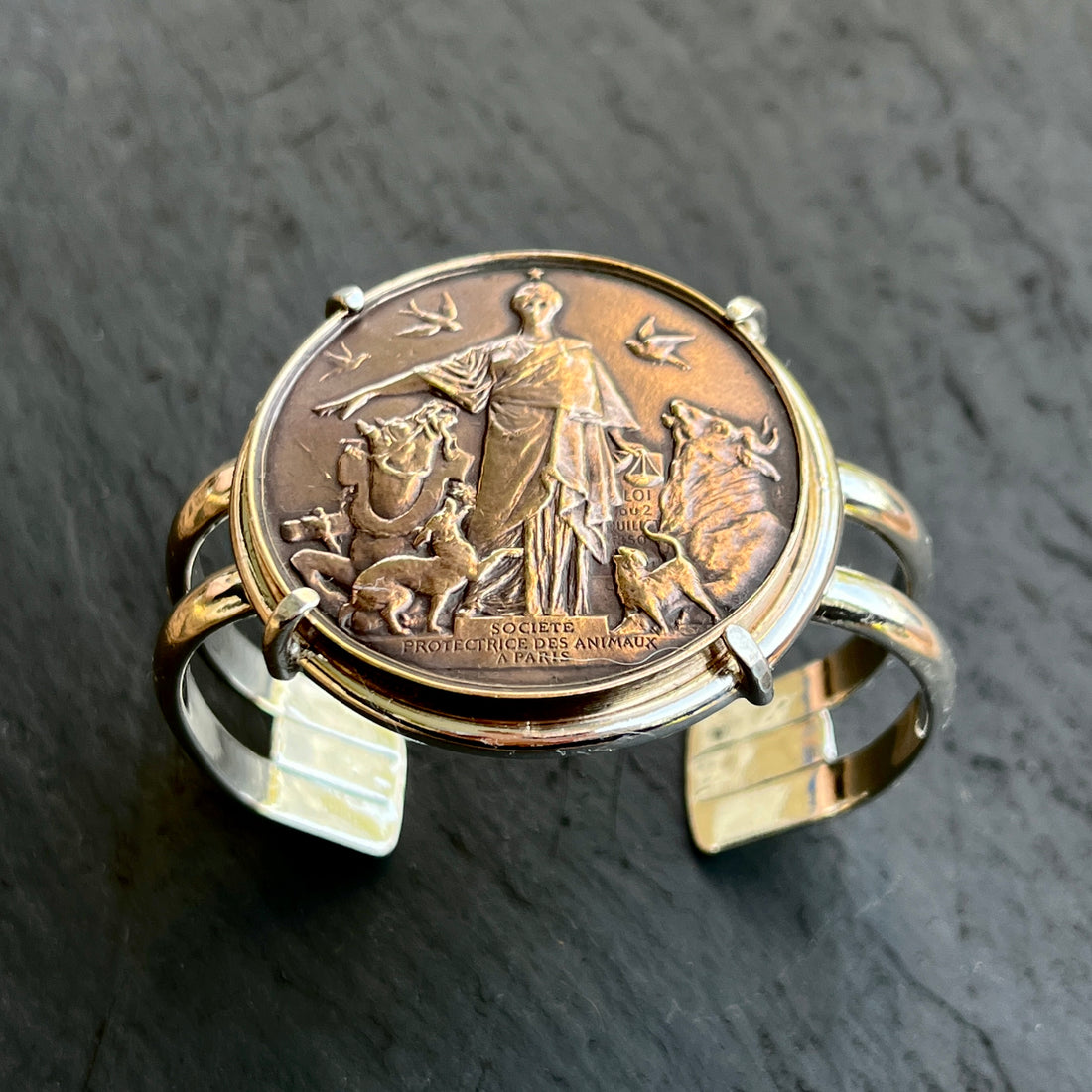Turning a Piece of History into Wearable Art

Many of the pieces of jewelry I create include antique medals featuring equine and canine subjects. I’m often asked about the background and history of these lovely miniature works of art. Hopefully, this short article will leave you better informed about why they were created and where they came from.
A medallion is a portable, flat, rounded disk. Usually made of metal, medallions typically feature designs on both sides. The original model for a medal is often carved in wax, then either cast or struck in bronze, silver or gold. The sculptors who created these pieces were referred to as medalists and were known for their expertise in sculpting in “bas” or low relief. Often, medals are worn in a similar way to necklaces, sometimes attached to ribbons. The value of a medallion is significant, as they are often given as sporting or military awards.
The history of vintage medallions is rich and varied, from their origins in ancient times to their use in the Middle Ages, Renaissance, and beyond:
- Ancient times
The Romans first produced medallions, which were often given as gifts or worn as status symbols. They were usually made of copper but could also be made of silver or gold.
- Middle Ages
Nobles commissioned medals to give to allies to gain their support. The materials used to make the medals depended on the recipient's social status.
- Renaissance
The Renaissance saw a renewed interest in ancient art, which influenced the design of medallions. In Italy, medallions were often used to decorate palaces and public buildings.
- 19th and 20th century
Military medal production increased significantly as did the production of medals for use as awards for a wide range of sporting events. Specifically, medals were often produced as awards for agricultural fairs, horse shows and dog shows.
Sometimes medals were commissioned by an organization like this medal created for the Societe’ des Protectrice des Animaux a Paris. The front of this medal depicts the symbolic head of this animal protection organization surrounded by the animals she loves. The reverse of the medal features a garland of leaves. The center of this garland was left blank in the original casting so that it could be personalized later with engraving.
In other situations, medalists created pieces that were more generic in nature like this Bronze Baroque Horse Head. Medals such as this could be purchased by a range of different organizations, then customized to give as awards or commemorative gifts.
When your wear a piece of jewelry made from an antique medal, you’re truly wearing a piece of history. I hope this short article provides you with a bit of insight into the background of these unique pieces of art.
